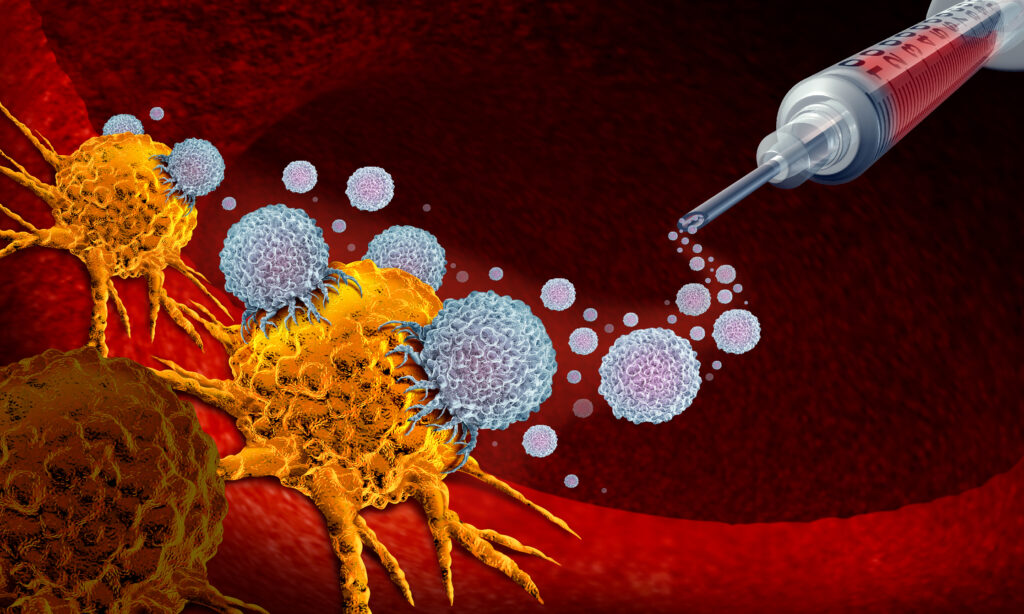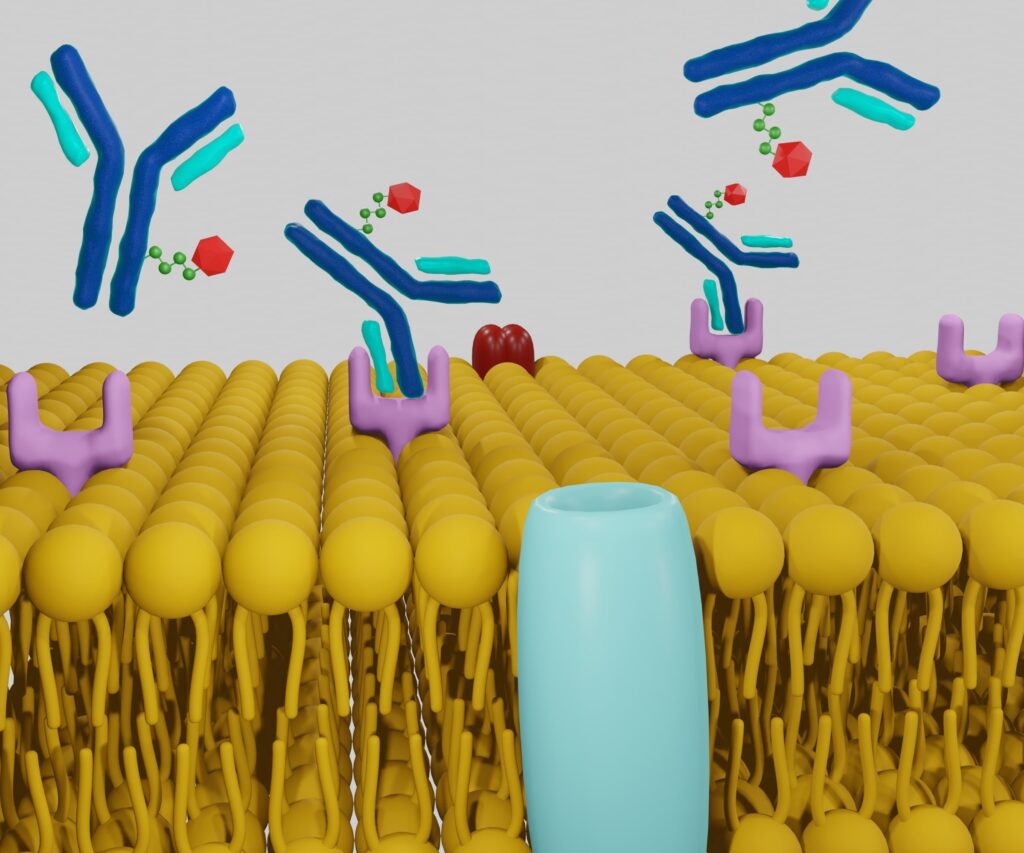Theranostics is a field that combines diagnosis and therapy, aiming to develop personalised and precise treatment strategies for various diseases.
A Hybrid Approach of Therapeutics and Diagnostics for the Management of Disease
Theranostic radiopharmaceuticals have shown promise in various fields, including oncology, neurology, and cardiovascular disease. It is an advancing research area that will revolutionise how we approach the treatment of various diseases.
Theranostics is an emerging field in nuclear medicine. It combines diagnostic and therapeutic techniques into a single approach and aims to develop personalised patient treatment plans based on their medical needs. This approach relies on technologies such as genetic testing, biomarker analysis, and electronic health records to collect and analyse data about an individual’s health status, disease risk, and response to treatment.
The goal of personalised medicine is to move away from a ‘uniform’ approach to medical care and instead create targeted therapies that are more effective, efficient, and affordable. This approach is particularly relevant in cancer treatment, where genetic testing can identify specific mutations that drive tumour growth and guide the selection of targeted therapies that are more likely to be effective.
The personalised medicine approach can be achieved by applying theranostics, which involves using diagnostic tests to find specific biomarkers or molecular targets associated with a particular disease or condition. Once these targets have been identified, therapeutic agents can be designed to target them, selectively providing more effective and precise treatment.
For example, theranostics can be used to identify patients with specific genetic mutations or protein expression patterns that are associated with cancer. Once these biomarkers have been identified, targeted therapies can be developed to attack the cancer cells while sparing healthy cells. This approach can reduce the side effects of conventional cancer treatments such as radiation and chemotherapy.
Personalised Theranostics in Oncology: Current Status and Future Perspectives
Targeted radionuclide therapy is one of the most promising applications of theranostics in cancer treatment. This involves the use of radioactive isotopes attached to cancer-targeting molecules that are delivered directly to cancer cells. The radioactive isotopes emit radiation that kills the cancer cells while sparing healthy tissue.
Theranostic approaches can also be used to monitor the effectiveness of cancer treatments. For example, positron emission tomography (PET) imaging can be used to visualise the distribution of a therapeutic agent within the body and track how it affects the cancer cells.
Furthermore, theranostics has shown encouraging results in treating various cancers, including neuroendocrine tumours, prostate cancer, and breast cancer. The approach can improve treatment outcomes and reduce the side effects of traditional cancer treatments such as chemotherapy and radiation.
Non-Invasive Imaging-Guided Theranostics for Atherosclerosis Management
Also, theranostics has the potential to play a vital role in the diagnosis and treatment of cardiovascular diseases. The approach involves the use of diagnostic tests to identify specific biomarkers or molecular targets that are associated with cardiovascular disease. Once these targets have been identified, therapeutic agents can be designed to target them, selectively providing more effective and precise treatment.
One of the most promising applications of theranostics in cardiovascular disease is using imaging techniques to identify vulnerable plaques in the arteries that can lead to strokes and heart attacks. For example, intravascular ultrasound and optical coherence tomography can be used to visualise the structure of arterial plaques and identify those most likely to rupture.
Theranostic approaches can also be used to monitor the effectiveness of cardiovascular treatments by enabling magnetic resonance imaging (MRI) to visualise changes in the heart and blood vessels following treatment. In addition, theranostics has shown promising results in diagnosing and treating cardiovascular diseases such as atherosclerosis, hypertension, and heart failure.
Molecular Imaging-Guided Theranostics for Neurodegenerative Diseases
Theranostics is used in the diagnosis and treatment of neurological disorders. The approach involves using diagnostic tests to identify specific biomarkers or molecular targets associated with neurological conditions such as Parkinson’s disease, Alzheimer’s disease and multiple sclerosis. Once these targets have been identified, therapeutic agents can be designed to target them, selectively providing more effective and precise treatment.
One of the most promising applications of theranostics in neurological disorders is the use of imaging techniques to visualise changes in the brain that occur during the progression of the disease. For example, PET imaging can detect the accumulation of amyloid plaques in the brain, a hallmark of Alzheimer’s disease.
Theranostic approaches can also be used to monitor the effectiveness of neurological treatments. For instance, theranostic approaches have been used to develop targeted therapies for multiple sclerosis that selectively target immune cells that attack the nervous system while sparing healthy cells. The approach can improve treatment outcomes and reduce the side effects of traditional neurological treatments.
Theranostic Radionuclides in Nuclear Medicine: From Diagnosis to Treatment
Radiopharmaceuticals contain a radioactive substance that can be used for diagnostic or therapeutic purposes. For example, radiopharmaceuticals selectively target specific biomarkers or molecular targets associated with a particular disease or condition in theranostics. This allows for more precise and effective treatment.
Theranostic radiopharmaceuticals can be used for both diagnosis and therapy. For example, a radiopharmaceutical can bind specifically to cancer cells expressing a particular protein. The radioactive substance in the drug emits radiation that kills the cancer cells while sparing healthy tissue. The same radiopharmaceutical can be used for diagnostic purposes by attaching a diagnostic molecule to the radioactive substance, allowing for the visualisation of the cancer cells using imaging techniques such as PET or SPECT.
One example of a theranostic radiopharmaceutical is lutetium-177 DOTATATE, which is used in treating neuroendocrine tumours. The radiopharmaceutical is designed to bind specifically to somatostatin receptors on the surface of neuroendocrine tumour cells. The radioactive substance in the drug emits radiation that kills the cancer cells while sparing healthy tissue. The same radiopharmaceutical can be used for diagnostic purposes by attaching a diagnostic molecule to the radioactive substance, allowing for the visualisation of the neuroendocrine tumours using imaging techniques such as PET or SPECT.
Theranostic radiopharmaceuticals have shown promising results in treating cancer, cardiovascular disease, and neurological disorders. The approach can potentially improve treatment outcomes and reduce the side effects associated with traditional treatments such as chemotherapy and radiation.
Examples of theranostic radiopharmaceuticals include:
- Lutetium-177 PSMA-617 is used for the treatment of metastatic prostate cancer. It selectively targets prostate-specific membrane antigen (PSMA) expressed on prostate cancer cells.
- Iodine-131 metaiodobenzylguanidine (MIBG) treats neuroendocrine tumours like pheochromocytoma and neuroblastoma. It selectively targets the norepinephrine transporter expressed on the surface of these tumours.
- Yttrium-90 ibritumomab tiuxetan is used for the treatment of non-Hodgkin lymphoma. It selectively targets CD20, a protein expressed on the surface of B-cell lymphoma cells.
- Iodine-131 tositumomab is used for the treatment of non-Hodgkin lymphoma. It selectively targets CD20, a protein expressed on the surface of B-cell lymphoma cells.
- Lutetium-177 DOTATATE is used for the treatment of neuroendocrine tumours. It selectively targets somatostatin receptors expressed on the surface of these tumours.
- Gallium-68 DOTATOC is used for the diagnosis and staging of neuroendocrine tumours. It selectively targets somatostatin receptors expressed on the surface of these tumours.
- Copper-64 PET tracers are used for the diagnosis and staging of prostate cancer. Examples include
- Copper-64 DOTATATE and Copper-64 PET/CT.
- Fluorine-18 FDG is used to diagnose and stage various cancers, including lung, lymphoma, and breast cancer. A glucose analogue accumulates in cancer cells due to their increased metabolic activity.
Artificial Intelligence and Machine Learning in Theranostics: Opportunities and Challenges
The future of theranostics is very promising, as this approach can revolutionise how we diagnose and treat a broad range of diseases and conditions.
The development of new and improved imaging techniques, such as PET/MRI and PET/CT scanners, is helping to improve the accuracy and sensitivity of theranostic imaging. This will enable us to detect diseases earlier and more accurately and to monitor treatment response more effectively.
The use of AI and machine learning is helping to identify new disease biomarkers and to develop more effective theranostic approaches. AI can also be used to analyse vast datasets of patient information to identify patterns and trends that can help to guide treatment decisions.
The development of new radiopharmaceuticals, such as alpha particle-emitting agents, is expanding the range of diseases and conditions that can be treated with theranostics. These new agents have the potential to deliver more precise and targeted therapy to cancer cells while minimising damage to healthy tissue.
Personalised Zevalin Therapy: Combining Imaging and Treatment for Optimised Outcomes
Zevalin is a theranostic radiopharmaceutical used for the treatment of non-Hodgkin’s lymphoma. It consists of two components: a monoclonal antibody called rituximab, which targets the CD20 antigen expressed on the surface of B-cell lymphoma cells, and a radioisotope called yttrium-90, which delivers radiation therapy to the cancer cells.
Zevalin’s theranostic aspect involves using a diagnostic agent called Indium-111 Zevalin. This agent is administered to the patient before treatment with Zevalin, and it allows doctors to determine the extent of disease involvement and the appropriate dose of Zevalin to use.
Indium-111 Zevalin is injected into the patient’s bloodstream during the diagnostic phase, which binds to the CD20 antigen on B-cell lymphoma cells. Next, the patient undergoes imaging with a gamma camera, which detects the radioactive emissions from the Indium-111. This allows doctors to determine the distribution of the lymphoma cells throughout the body and assess the degree of CD20 expression.
Based on the diagnostic imaging results, doctors can calculate the appropriate dose of Zevalin for treatment. The rituximab component of Zevalin targets the CD20 antigen on the surface of the cancer cells, delivering the yttrium-90 directly to the cancer cells and sparing healthy tissue. In addition, the yttrium-90 emits beta radiation, which damages the DNA in the cancer cells and causes cell death.
Using Zevalin as a theranostic radiopharmaceutical allows for more precise and personalised treatment of non-Hodgkin’s lymphoma, improving outcomes and reducing side effects.
Disclaimer
The information provided in this article, “Personalised Theranostics for Cancer: A New Era in Precision Medicine,” is intended for general informational and educational purposes only. It does not constitute professional medical advice, diagnosis, treatment, or recommendation of any kind. The content reflects current research and developments in the field of theranostics as of the publication date and may not be exhaustive or reflect the most recent advances or regulatory approvals.
Readers are strongly advised to consult qualified healthcare professionals or medical practitioners before making any decisions related to diagnosis, treatment options, or medical care based on the content presented. Personalised medicine and theranostic approaches are highly individualised and should only be applied under the guidance of appropriately trained clinicians.
Open Medscience does not endorse, promote, or guarantee the efficacy, safety, or appropriateness of any specific treatments, procedures, pharmaceutical products, or therapeutic approaches mentioned in this article. Use of the information is at your own risk.
Neither the authors, contributors, nor Open Medscience shall be held liable for any loss, injury, or damage resulting from the use or reliance on the information contained herein.
You are here: home » diagnostic medical imaging blog »



